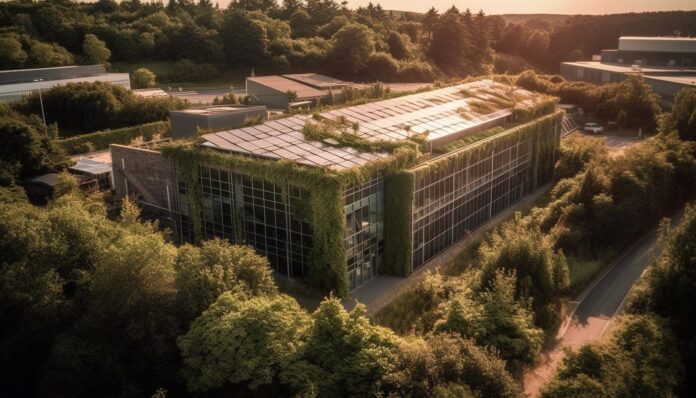
The transition towards renewable energy in the United States is a critical step towards a sustainable and environmentally responsible future. This shift from traditional fossil fuels to renewable sources like wind, solar, and hydro is not just an environmental imperative but a strategic move to ensure long-term power security.
However, this transition is fraught with challenges ranging from technological limitations to financial and policy constraints. In this blog, we will delve into these obstacles, exploring the complexities of renewable energy adoption and the path forward.
Climate Change and Energy Transition

The link between climate change and the necessity for renewable energy is undeniable. As the planet faces increasing temperatures and extreme weather events, the need to reduce greenhouse gas emissions becomes more urgent.
Renewable energy sources, such as wind and solar, offer a way to significantly cut down these emissions, providing cleaner, more sustainable power alternatives to traditional fossil fuels. However, this transition is not just about reducing carbon footprints; it’s also about transforming our energy systems in a way that aligns with environmental goals.
Availability of Renewable Resources
The United States is blessed with an abundance of renewable resources, each with unique geographical distributions. Solar energy thrives in sun-rich states like California and Arizona, while the Great Plains offer ideal conditions for wind power.
The diversity of sustainable resources across the country provides a substantial opportunity for a comprehensive power strategy, but it also brings challenges in harnessing these resources effectively. Balancing the geographical variations with the technological and logistical aspects of harnessing these resources is key.
Initial Costs and Investment
The transition to renewable energy is often hindered by high initial costs. Installing solar panels, wind turbines, and other renewable infrastructure requires substantial upfront investment, posing a significant barrier for both individuals and businesses. While the long-term savings and environmental benefits are clear, these initial costs can be daunting.
Financial incentives and innovative financing models are crucial in making renewable energy more accessible. Overcoming this financial hurdle is not just about making sustainable power feasible; it’s about democratizing access to clean energy and ensuring that it is a viable option for all sectors of society.
Government Policies and Incentives

Governmental support through policies and incentives is pivotal in driving the adoption of renewable energy. Legislation that encourages investment in renewables, such as tax credits and subsidies, plays a critical role in leveling the playing field against established fossil fuels.
These policies not only make sustainable energy more financially viable but also signal a commitment to a sustainable power future. However, crafting effective policies requires a nuanced understanding of the energy sector, balancing economic, environmental, and social objectives.
Infrastructure and Grid Integration
Integrating renewable energy into the existing grid presents substantial challenges. The intermittent nature of sources like solar and wind requires a rethinking of energy infrastructure and grid management. Upgrading the grid to handle these variable power sources is not just a technological challenge but also an economic and logistical one.
The transition involves not only installing new generation capacities but also ensuring that the power distribution system is robust, flexible, and capable of managing the fluctuations inherent in sustainable sources.
Energy Storage Solutions
The intermittent nature of renewable energy sources like solar and wind makes energy storage a critical component of a sustainable power system. Effective storage solutions are needed to balance supply and demand, ensuring power availability when the sun isn’t shining or the wind isn’t blowing.
Current storage technologies, while improving, still face limitations in terms of capacity, efficiency, and cost. Innovations in power storage, from advanced battery technologies to novel methods like pumped hydro storage, are crucial in harnessing the full potential of sustainable power.
Public Awareness and Education

Public awareness and education are foundational to the widespread adoption of renewable energy. Misconceptions and lack of knowledge about the benefits and feasibility of sustainable power can hinder its acceptance and adoption. Awareness campaigns and educational initiatives play a crucial role in demystifying renewable energy and showcasing its benefits.
These efforts not only inform the public but also build a supportive base for policy changes and investments in renewables. Effective communication and community engagement are essential in cultivating a culture that supports and advocates for sustainable power.
Energy Transition Job Opportunities
The shift towards renewable energy is not just an environmental necessity; it also presents significant economic opportunities. This transition is creating a new landscape of job opportunities, from manufacturing and installation to maintenance and innovation.
However, capitalizing on these opportunities requires investment in workforce development and training. Equipping the current and future workforce with the necessary skills and knowledge is essential to support the growing sustainable power sector. The energy transition offers a chance not only to move towards a more sustainable future but also to drive economic growth and job creation.
Environmental Concerns and Mitigation
While renewable energy is a cleaner alternative to fossil fuels, it is not without its environmental impacts. Issues such as land use for solar farms or the effect of wind turbines on bird populations need careful consideration and management.
Balancing the environmental benefits of renewables with their potential impacts requires thoughtful planning and mitigation strategies. Addressing these concerns is crucial for ensuring that the transition to sustainable power is as environmentally responsible as possible, minimizing negative impacts while maximizing benefits.
Energy Equity and Accessibility

Ensuring equitable access to renewable energy is a critical aspect of the transition. Disparities in access can leave marginalized communities behind, exacerbating existing inequalities. Addressing these disparities involves not only making sustainable power financially accessible but also ensuring that it reaches all segments of society.
Solutions could include community solar projects, subsidies for low-income households, and targeted investments in underserved areas. A just transition to renewable energy requires a commitment to equity, ensuring that the benefits of clean power are shared by all.
Future Outlook and Conclusion
In summary, the adoption of renewable energy in the US faces a complex array of challenges. From technological and logistical hurdles to financial and policy barriers, the path forward requires a concerted effort across multiple fronts.
Despite these challenges, the potential benefits of a renewable power future are immense, offering a path to sustainability, economic growth, and environmental stewardship. The future of sustainable energy is not just about technology; it’s about creating a society that values and invests in a clean, sustainable power future.








